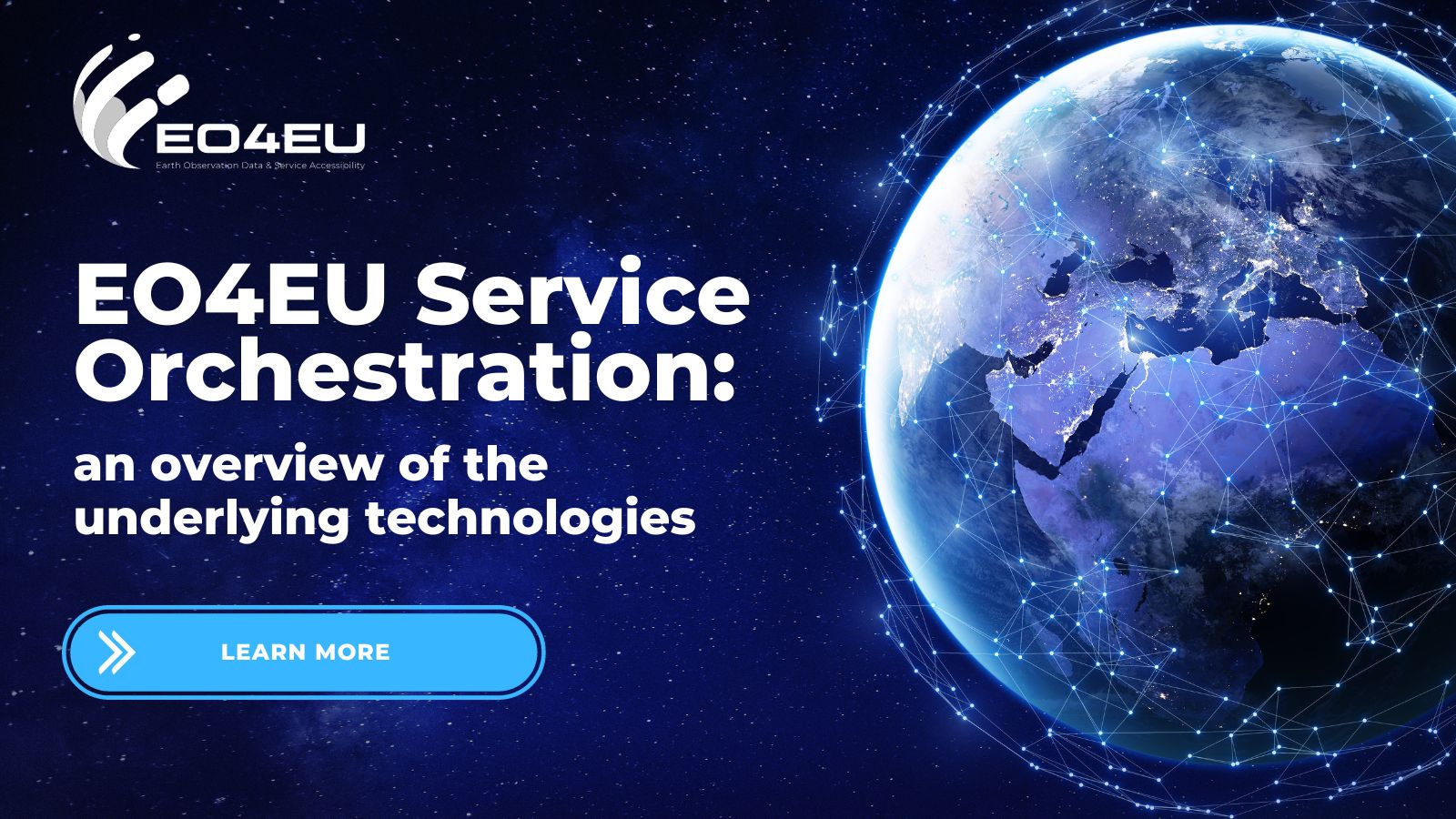EO4EU Service Orchestration: an overview of the underlying technologies
To support the scientific, social and technological growth, EO4EU is leveraging one of the most fascinating resources we have: Earth observation data. To achieve this, EO4EU is creating a unique entry point to the major European EO datasets, namely the EO4EU Platform.
But what are the tools that will enable the seamless integration of the different data sources? What are the technical solutions that will underpin the EO4EU platform? Dive into our article to discover.
Addressing users’ needs through a semantic Knowledge Graph
The EO4EU Platform's underlying infrastructure encompasses a common pool of resources that brings together multiple data sources. To ensure the fairness of EO data knowledge, the Platform will deploy a semantic-enhanced knowledge graph that will facilitate the search across sources. The knowledge graph will extract the textual description of the datasets from the services to serve datasets that match semantically the queries of the users. This will enable the Platform to meet specific user needs and provide the required dataset.
Ensuring Interoperability through a multi-cloud environment
On the backend level, the EO4EU Platform relies on a robust service orchestration and multi-cloud environment. The cloud system includes the ADA Cloud from CINECA and WEkEO from ECMWF, which are based on OpenStack infrastructure technology. This ensures interoperability and consistency between the two clouds. Furthermore, by adopting Infrastructure as Code (IaC) and GitOps best practices and deploying several auxiliary support components, EO4EU pays particular attention to ensuring high deployment speed and frequency, reliability, stability and observability of the Platform. As a result, the system is designed to guarantee speedy anomaly detection and regular updates.
Leveraging Machine Learning to facilitate the transfer of data
Considering the large quantity of EO data that the EO4EU Platform will produce, it is essential to ensure a powerful computational infrastructure. For this purpose, two types of models will be analysed, developed, trained and deployed within EO4EU: the Self-Supervised Learning (SSL) models and the Models of Learned Compression. The ambition is to leverage the abundance of available data and the most recent advancements in the field to offer compression capabilities for the EO data and overcome the barriers of operating with large volumes of unlabelled data.
A customisable dashboard to empower all users with the available tools
Last but not least, an advantage of the EO4EU Platform is the user-friendly interface. The Platform is being designed to provide access to all the functionalities and interactions to a wide range of users. Through a dedicated Workflow Editor, the users will be able to effortlessly create, customize, and manage their workflows, as well as take advantage of numerous components that meet their needs. Thus, flexibility and optimization are two valuable characteristics of the Platform’s main interface that aim to ensure a responsive and seamless experience.
